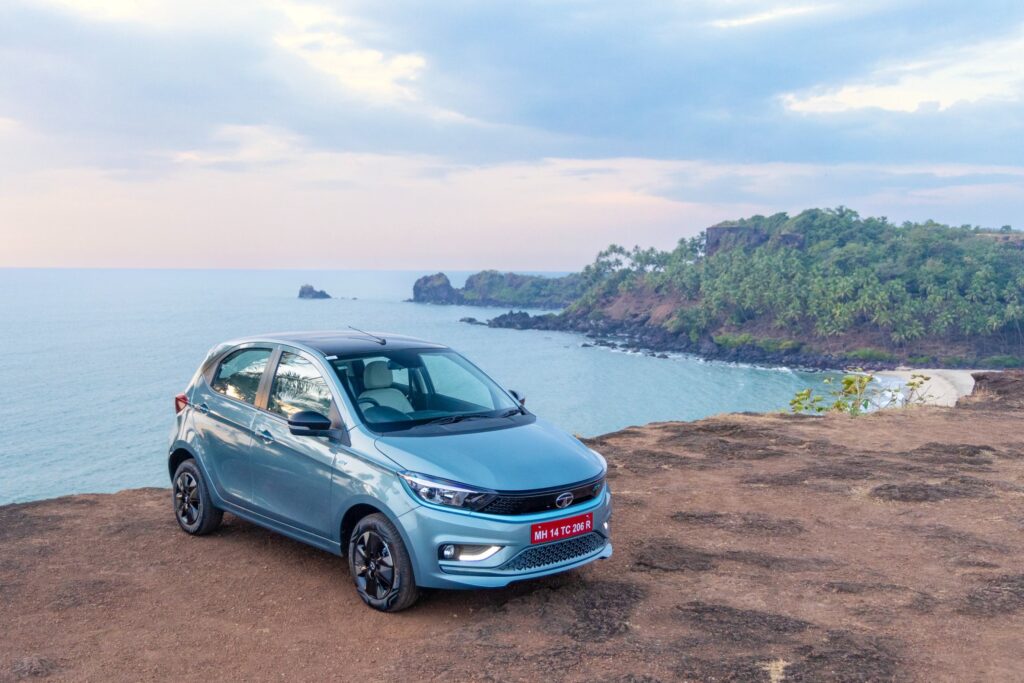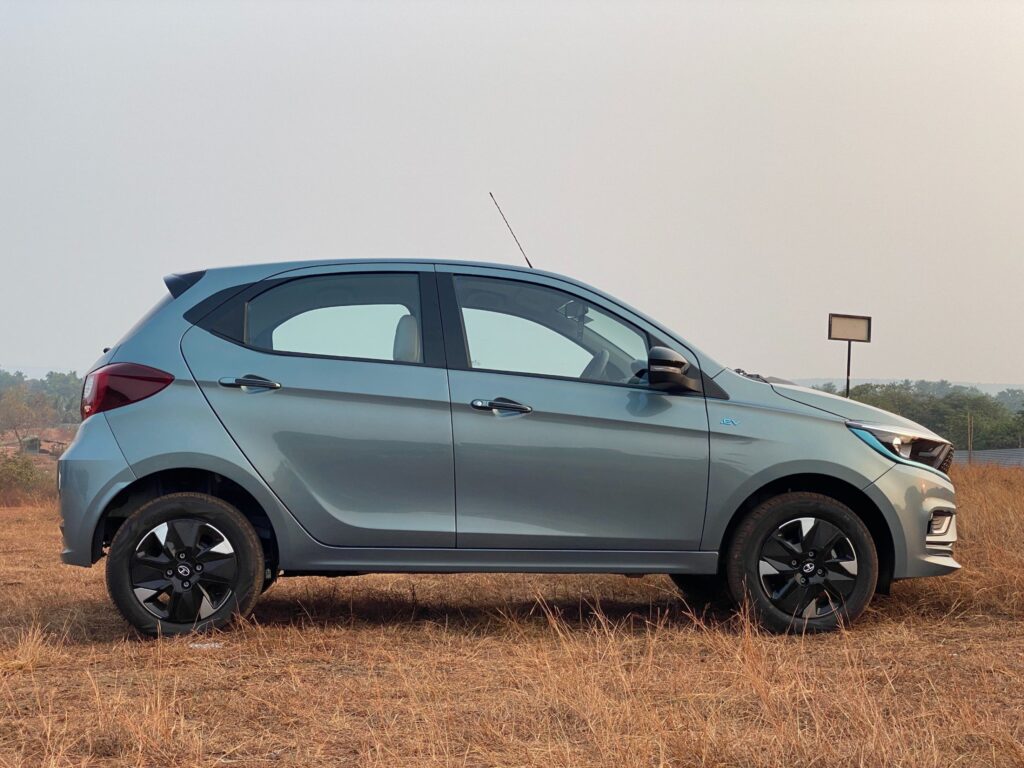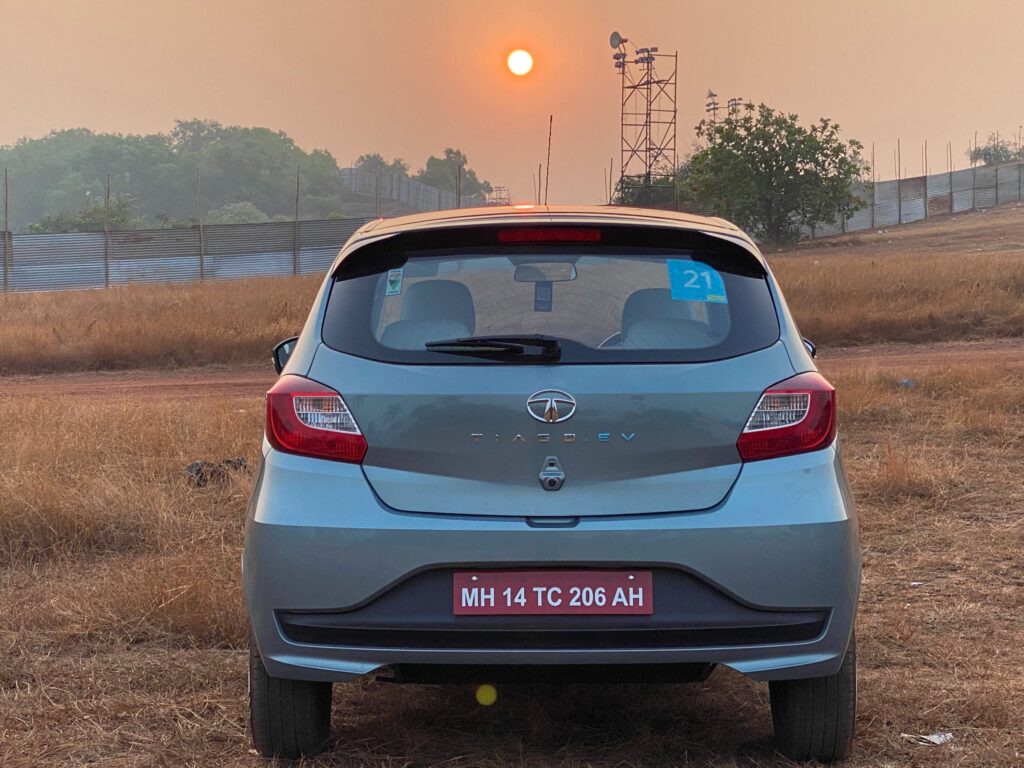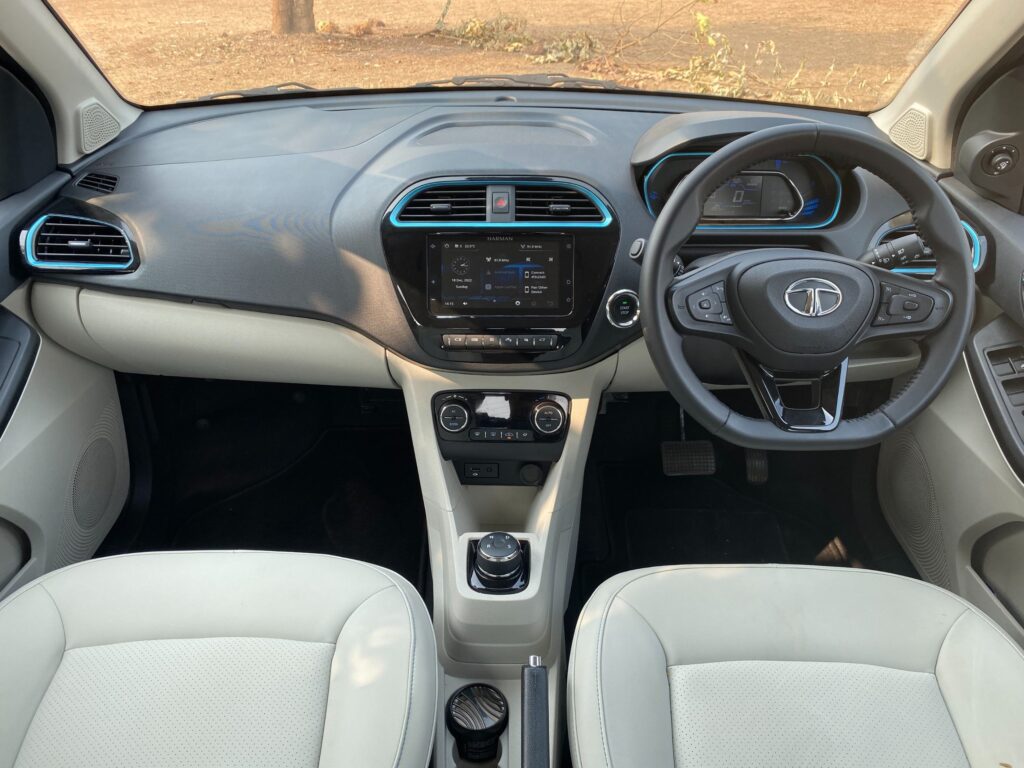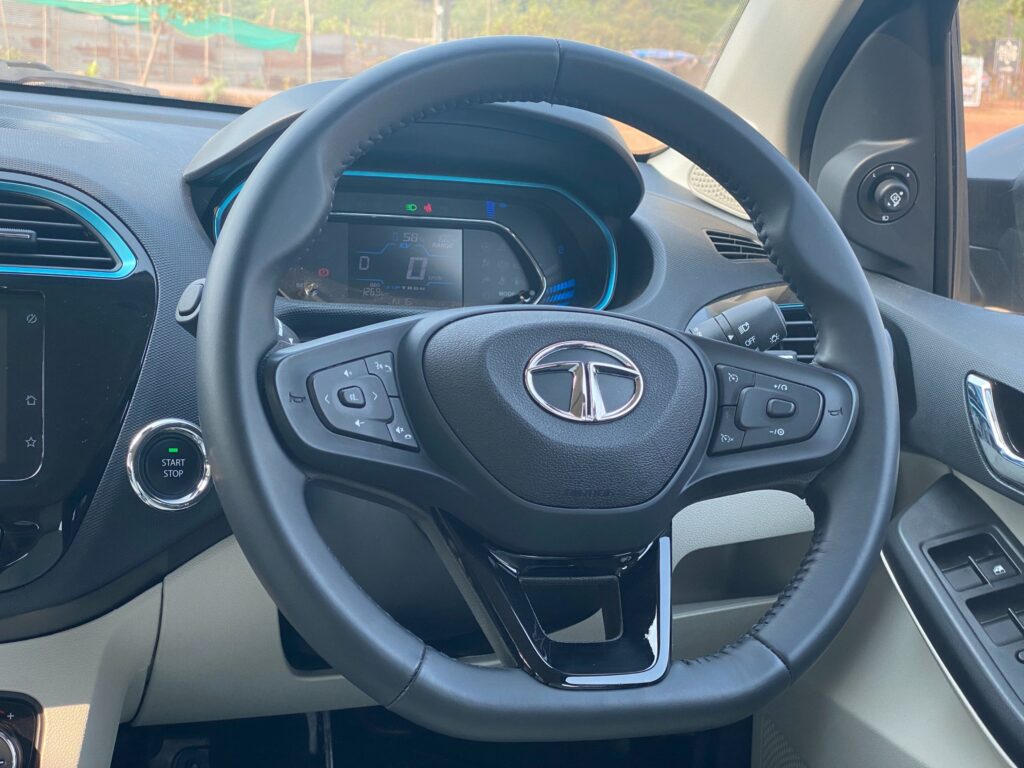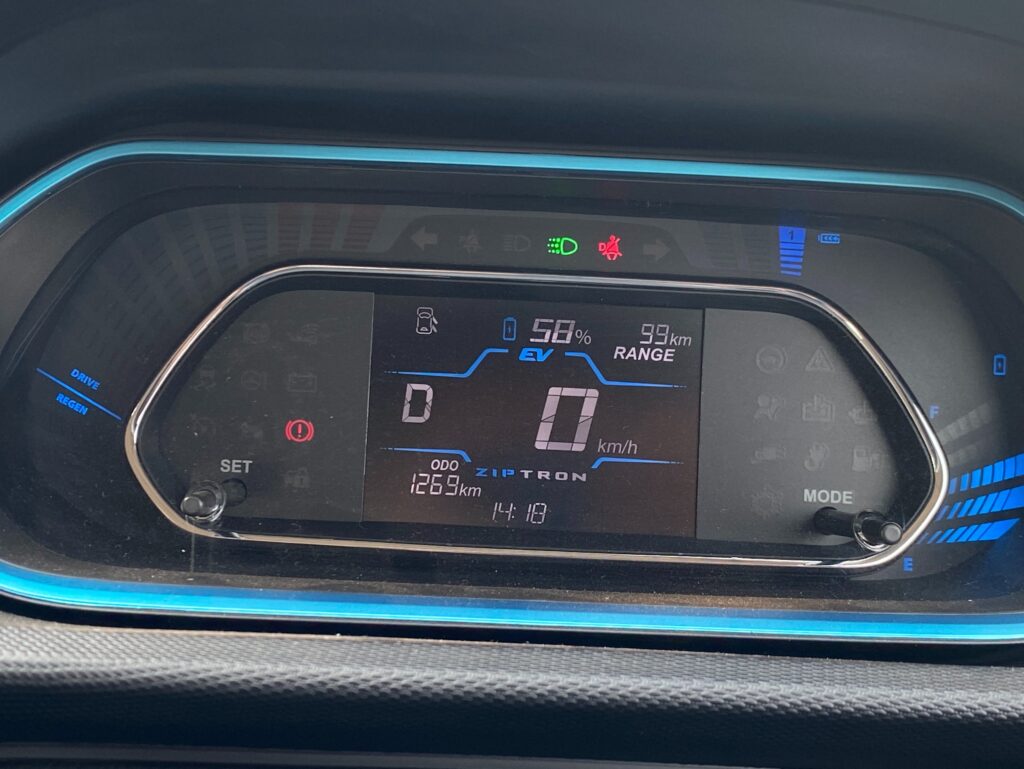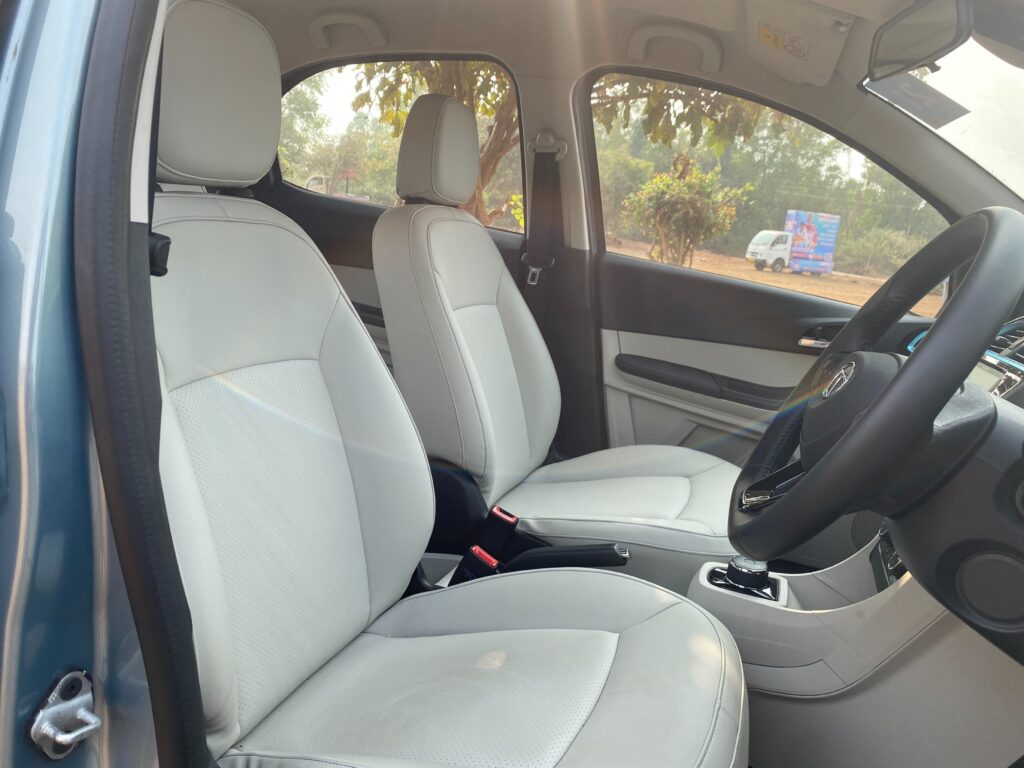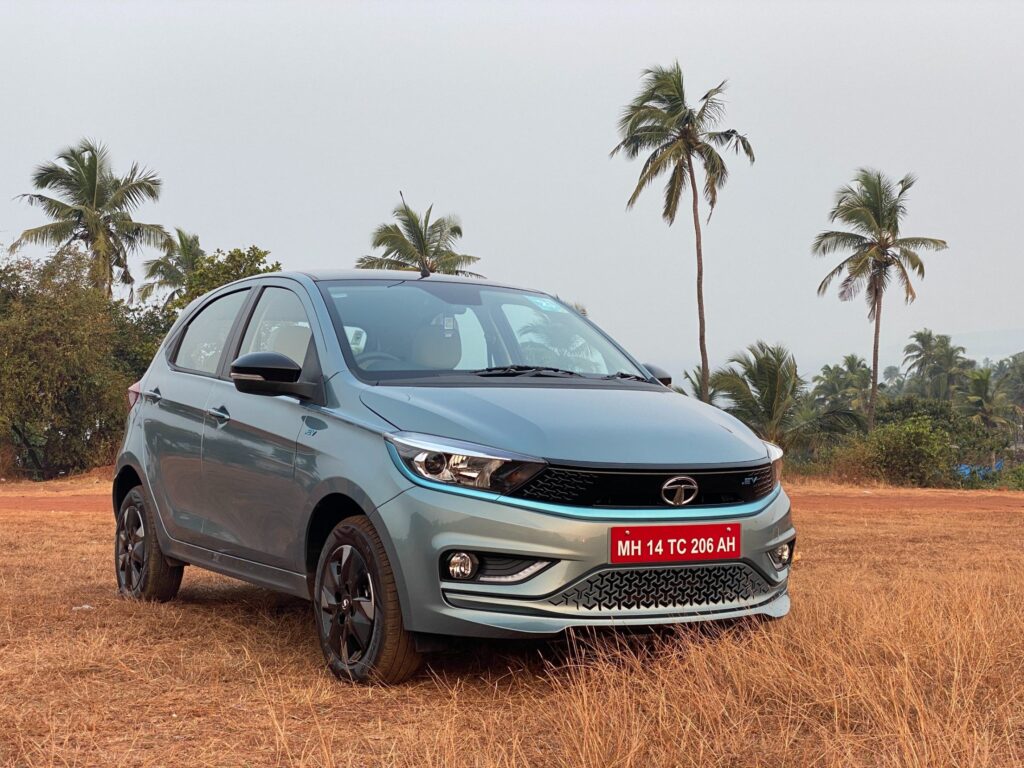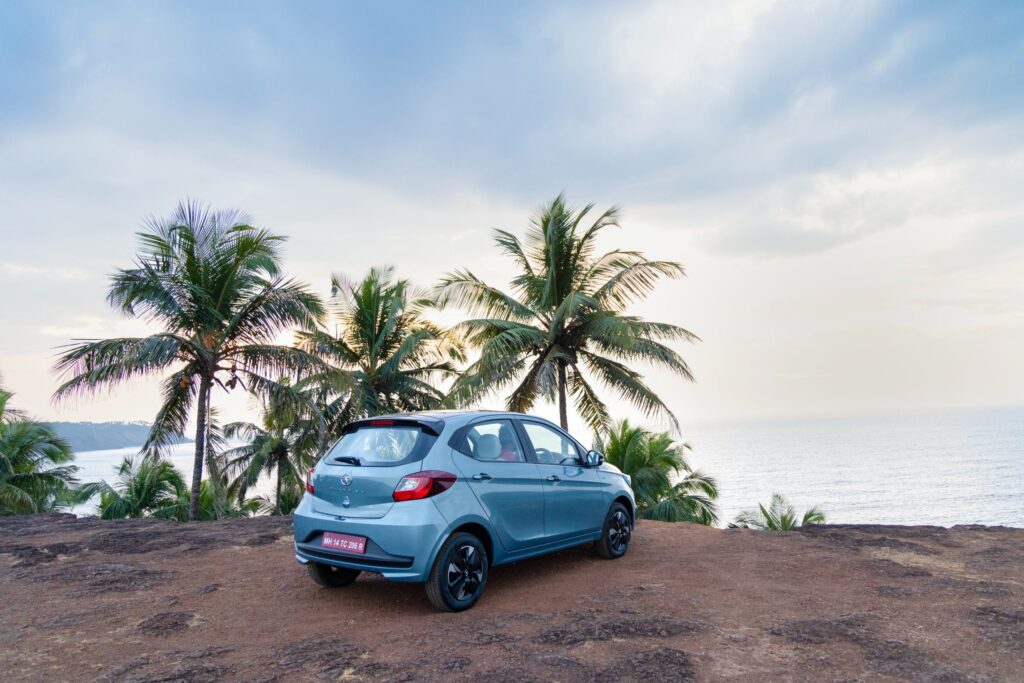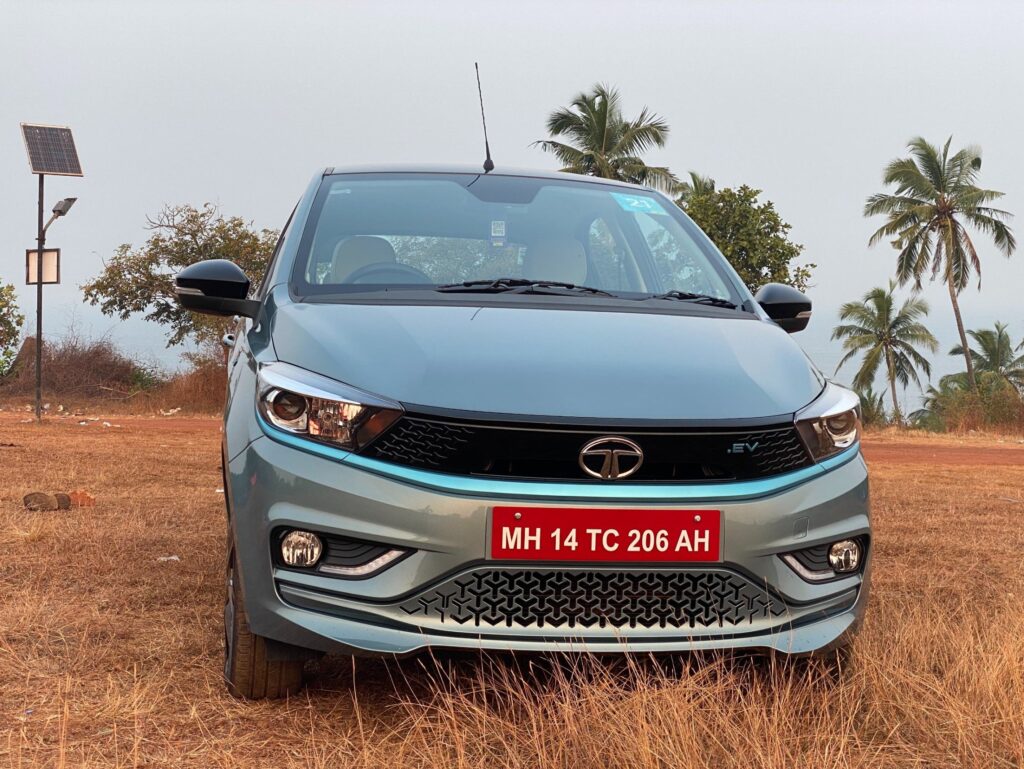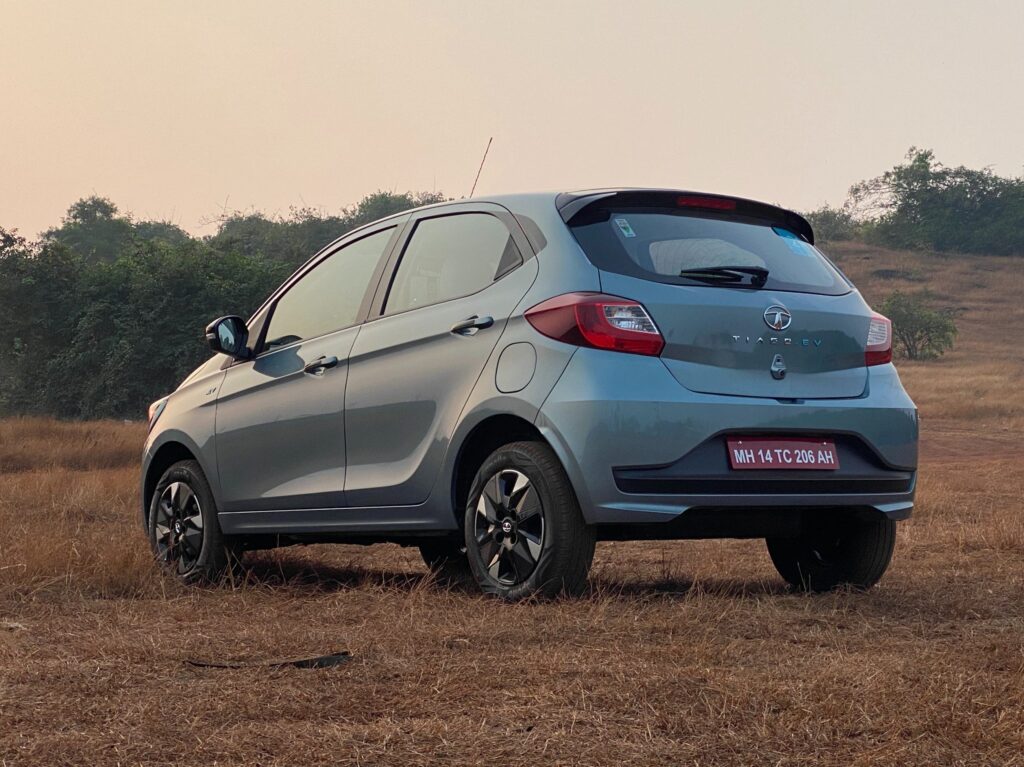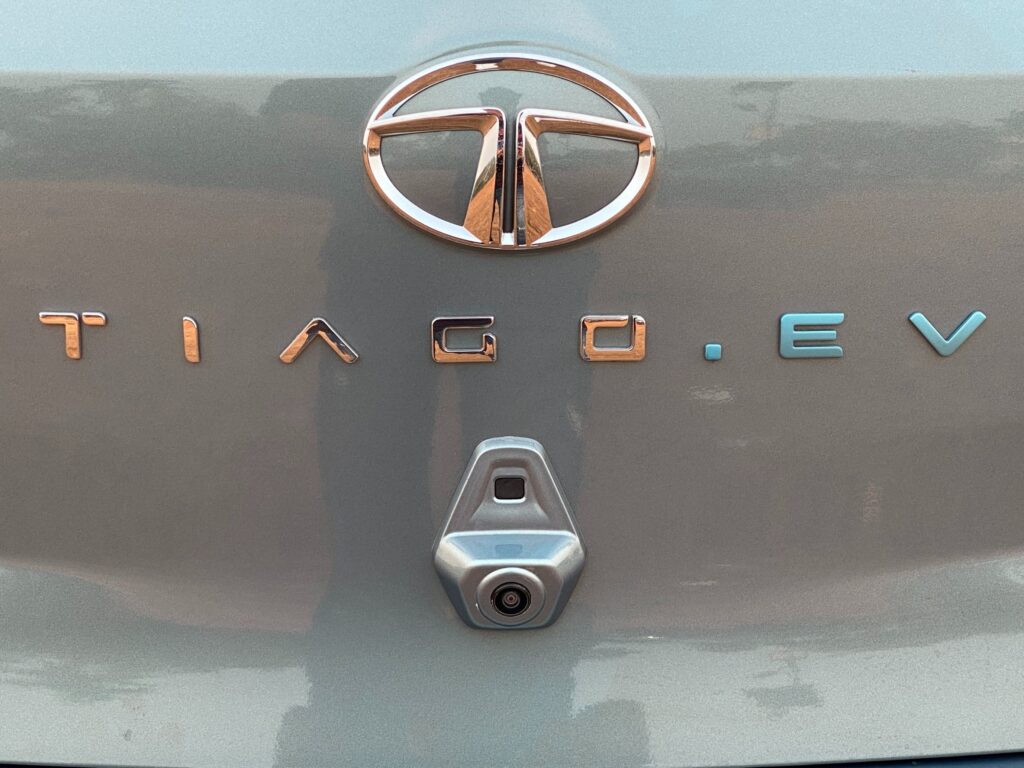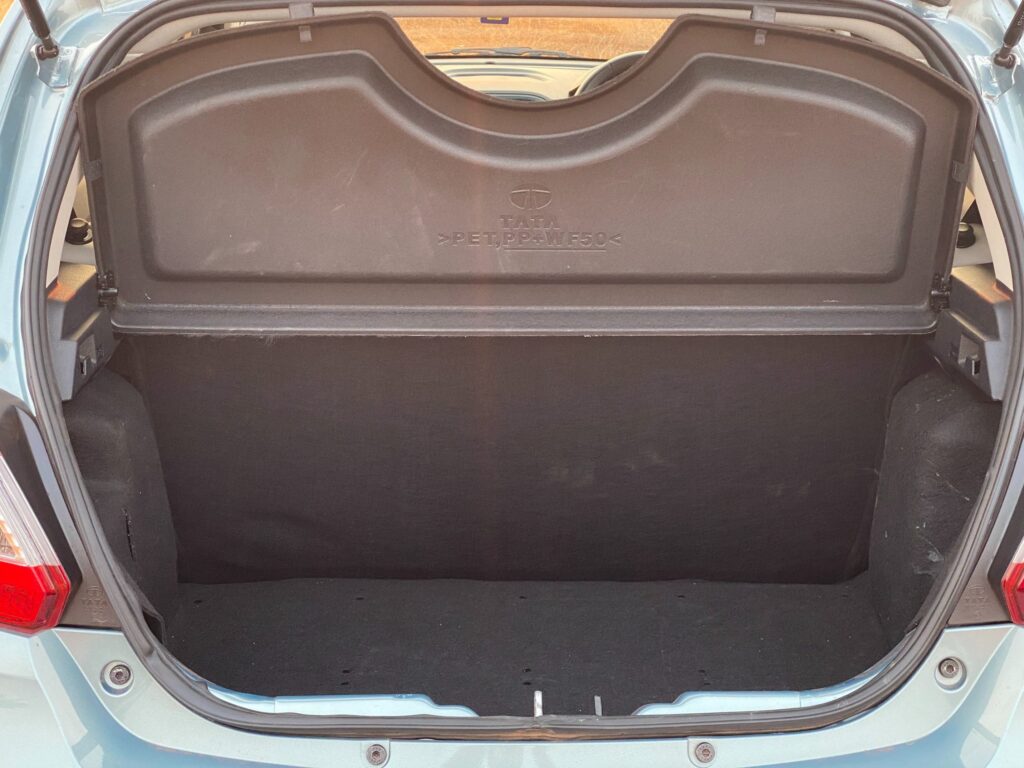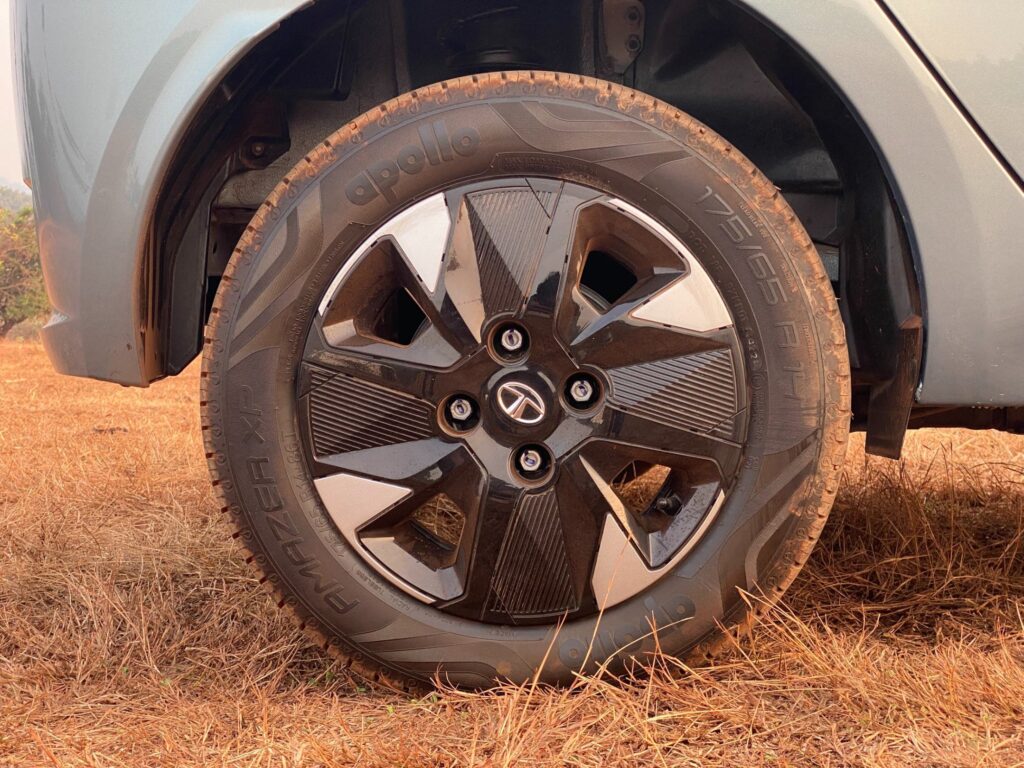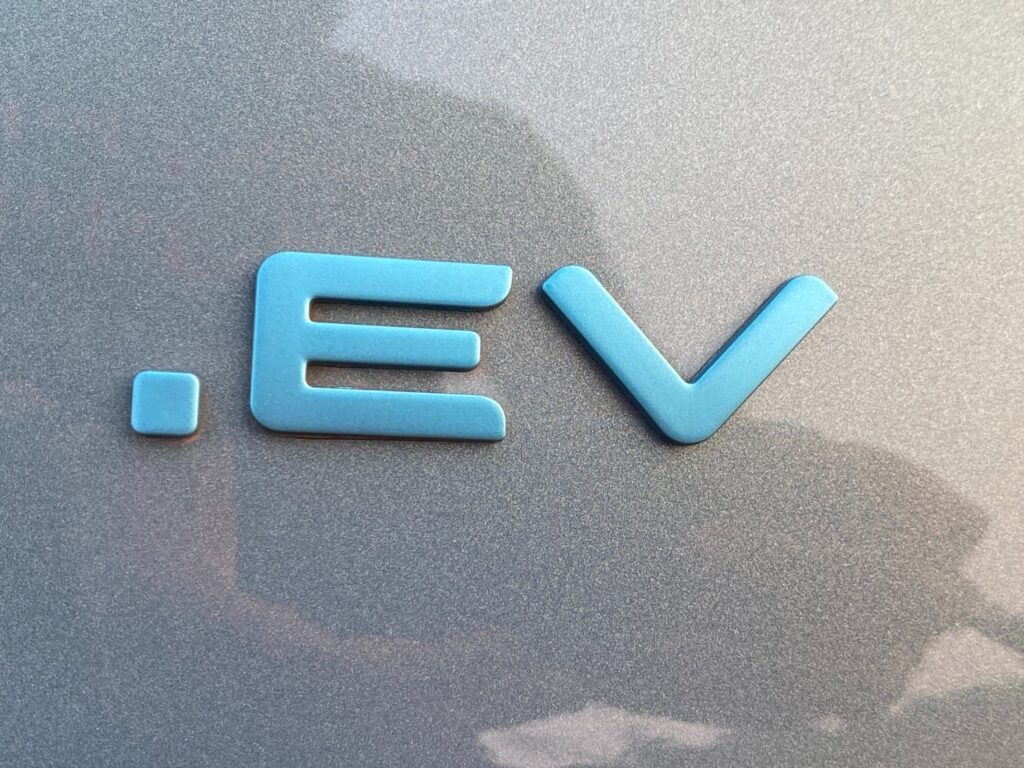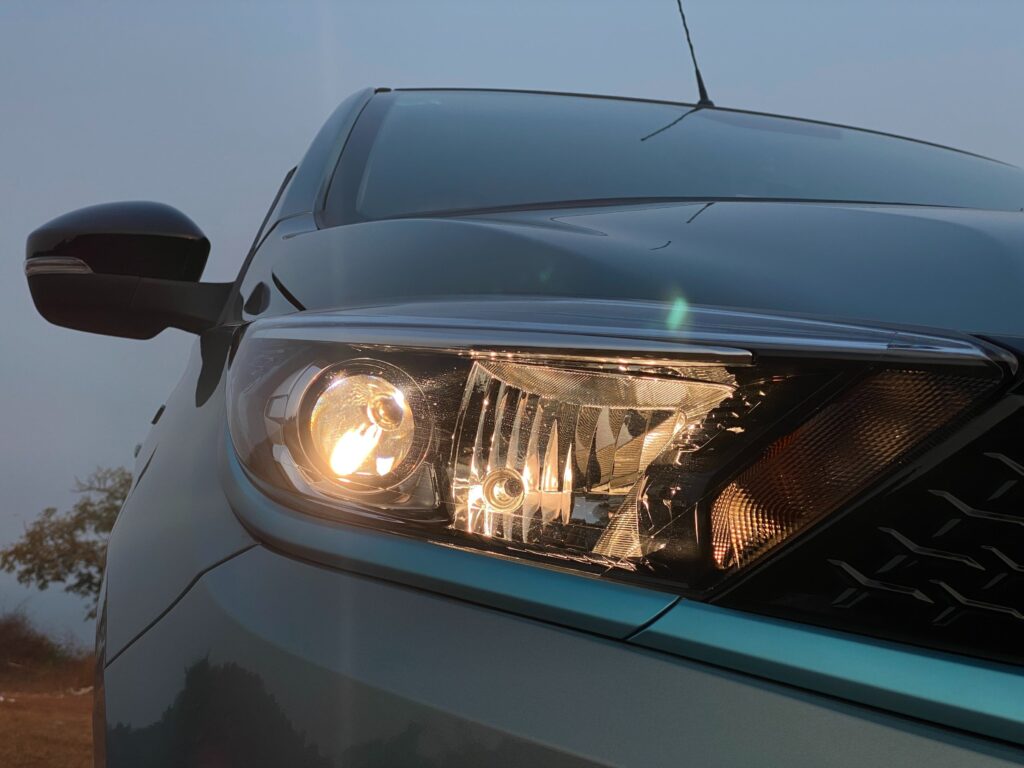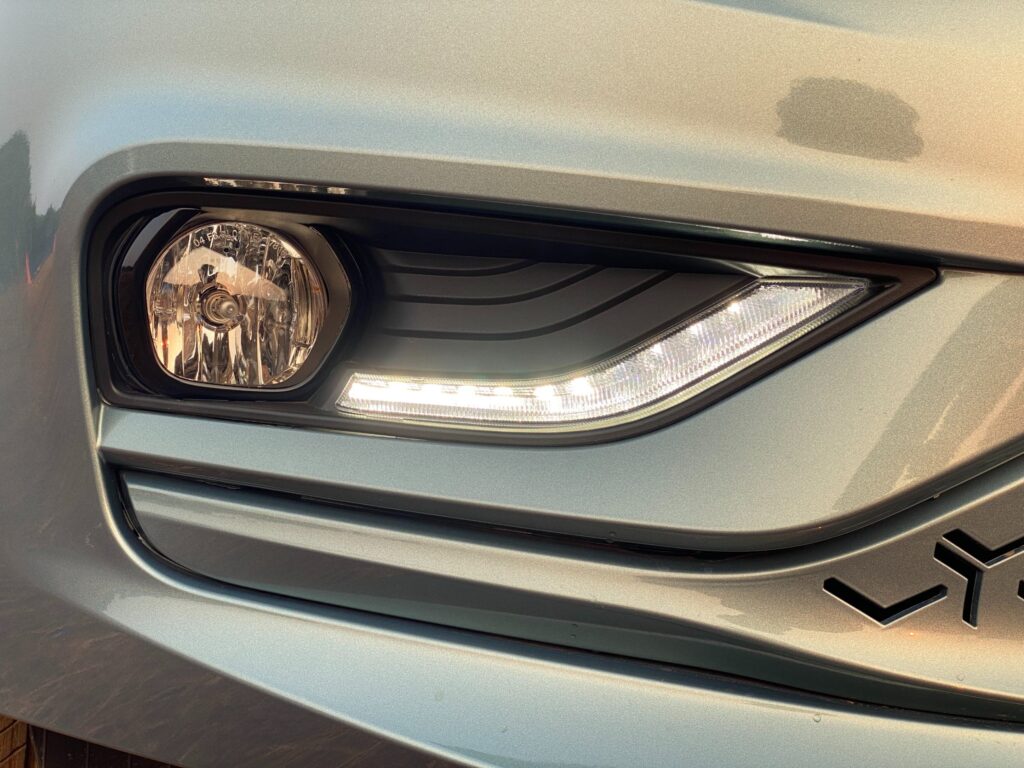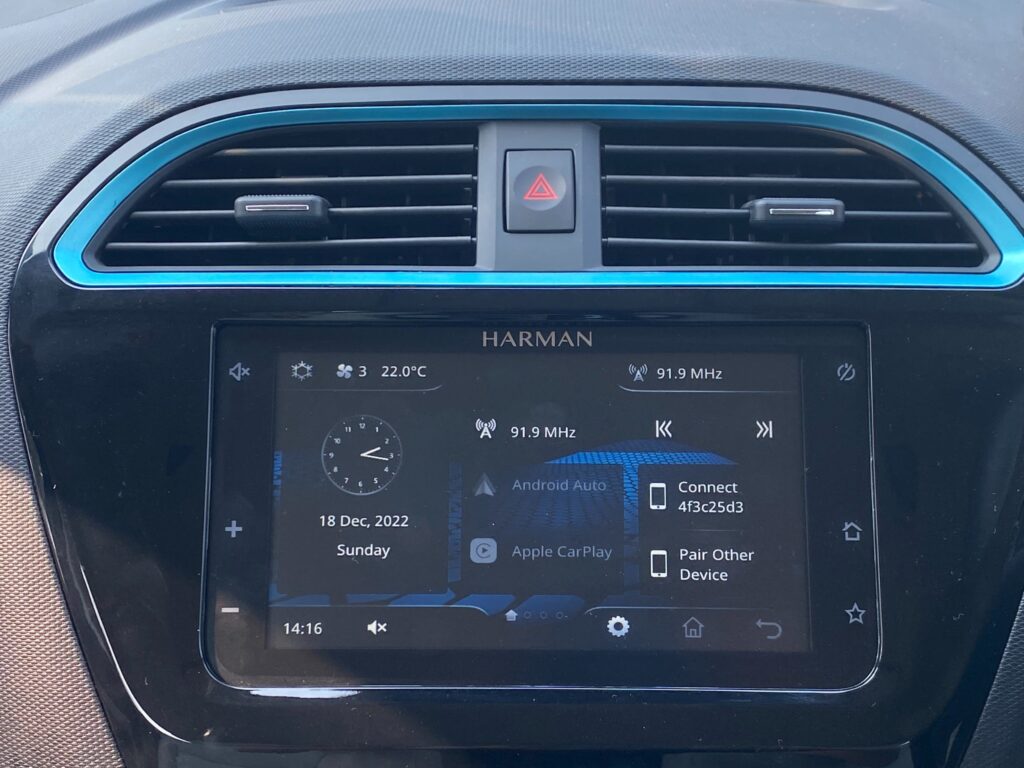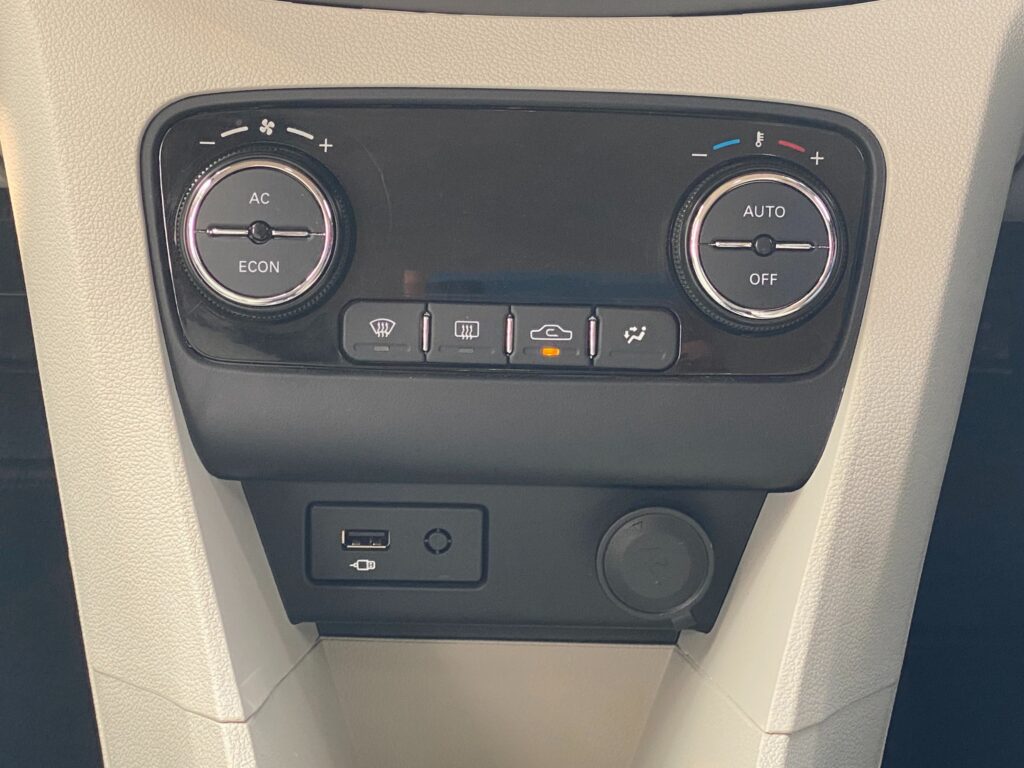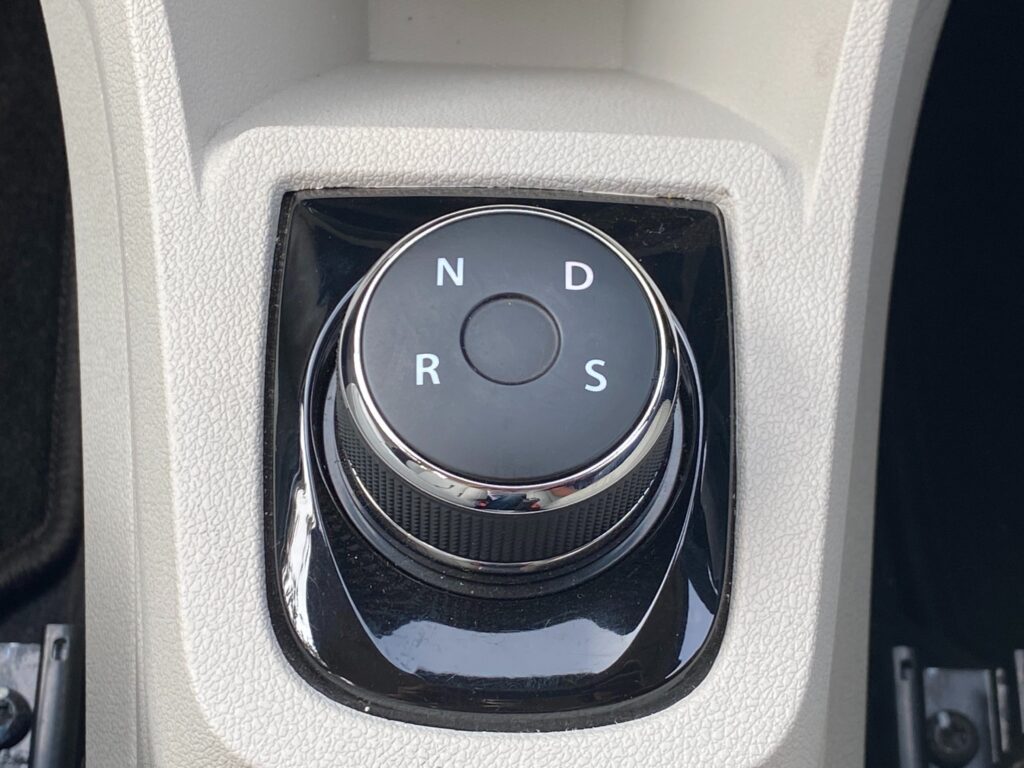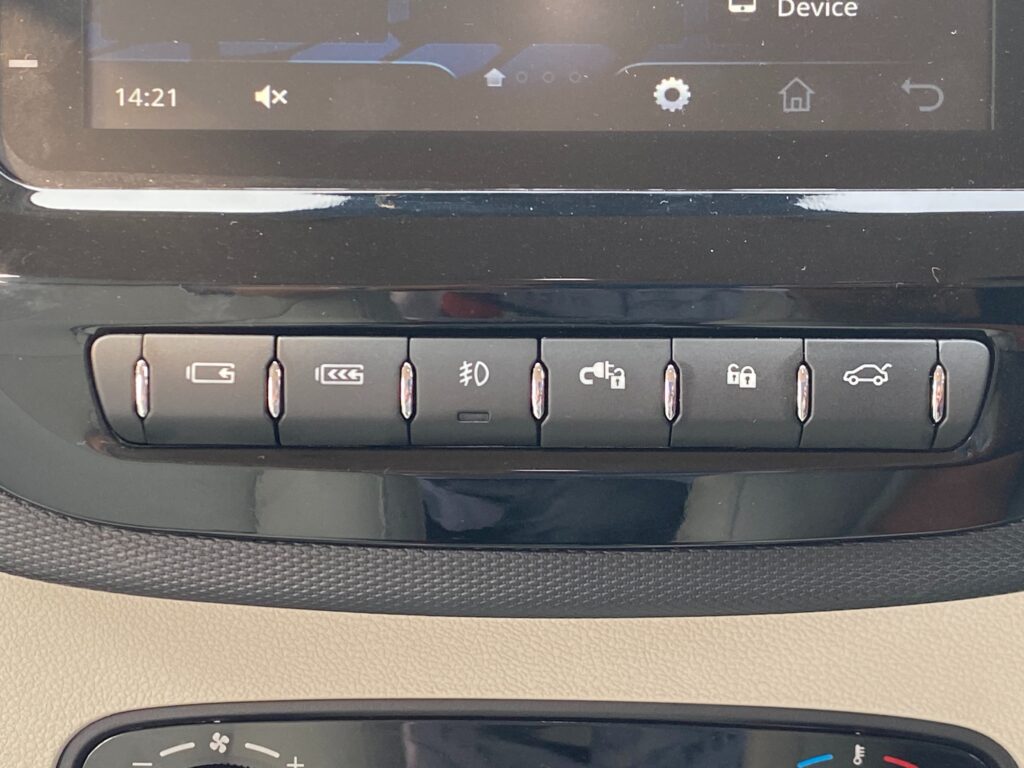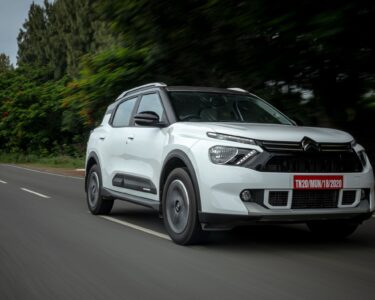Before we talk about the new Tiago EV, let’s roll back the pages as Tata Group was planning to sell the automotive division because of the huge loss it is making a few years back but then the group was given one last chance to make a comeback for the Automotive division and boy oh boy !! the engineers delivered on the promise and launched the Tiago hatchback in 2016. As well known rest is history and currently, the company is the third largest manufacturer in volumes but in the EV segment, Tata Motors is the leading manufacturer as they predicted the EV revolution much before anyone else and adopted most of its current model for EV alternatives.
The Nexon kick-started the journey followed up with Tigor and the final product in this current generation of electric models is the all-new Tiago EV. Even though consumers were eagerly waiting for the launch of the Altroz EV but the company went ahead with Tiago instead and the latter might come sometime in the future. Now let’s talk Tiago EV as it is the most important launch for Tata Motors in the EV segment because just like its original ICE engine model, the Tiago EV can be a huge seller because of its price point and mass acceptance of EVs. Now let’s find out whether the Tiago EV have all the ingredients for revolution.
Styling
Tata Motors hasn’t changed the design of the original Tiago except for some minor tweaks as part of the facelift. For the EV model, the designers have made minor changes like a new closed front grille with an EV badge to make sure that people will understand that it is not a regular Tiago while the projector headlamps are connected by a blue strip as it gives a wider feel for the hatchback. The front bumper gets a new lip to make it look sporty while the DRLs are placed near fog lamps like the ICE model but the air-intakes have horizon-next lines.
On the side, the changes are limited to just new wheel covers to improve aerodynamics according to Tata Motors and the wheels are 14-inch while the door handles get a black line. The Tiago EV now comes with the dual-tone colour option with a black contrasting roof and the rear changes are limited to just a new bumper along with a Tiago EV badge on the rear door. Tata Motors offer the Tiago EV in 5 new colours – Teal Blue, Daytona Grey, Pristine White, Midnight Plum and Tropical Mist. All these colours go well with the hatchback. Overall, the changes do make the EV stand out but not much.
Interior
Like the exterior, Tata Motors hasn’t made any big changes for the interior as the dashboard and steering wheel are shared with the ICE model but the blue elements on the AC vents do give a fresh feel. But the biggest change is the introduction of leatherette seats and steering wheel as it’s a segment’s first feature but it is available only on the top-end variant. Apart from this, the digital instrument cluster graphics has minor tweaks for the EV model. The gear lever on the centre console is replaced by the rotary knob to increase space.
The Tiago EV comes with features like a 7-inch Harman infotainment system with 8 speakers, TPMS, automatic climate control, rain-sensing wipers, automatic headlamps, push-button start/stop, cruise control, hill start, descent assist and more than 45+ connected car features. The battery pack is placed low on the body to reduce the centre of gravity and it doesn’t affect the interior space which is space in the ICE model. The boot space is the same as the regular model but the EV version doesn’t get a spare wheel instead puncture repair kit is given.
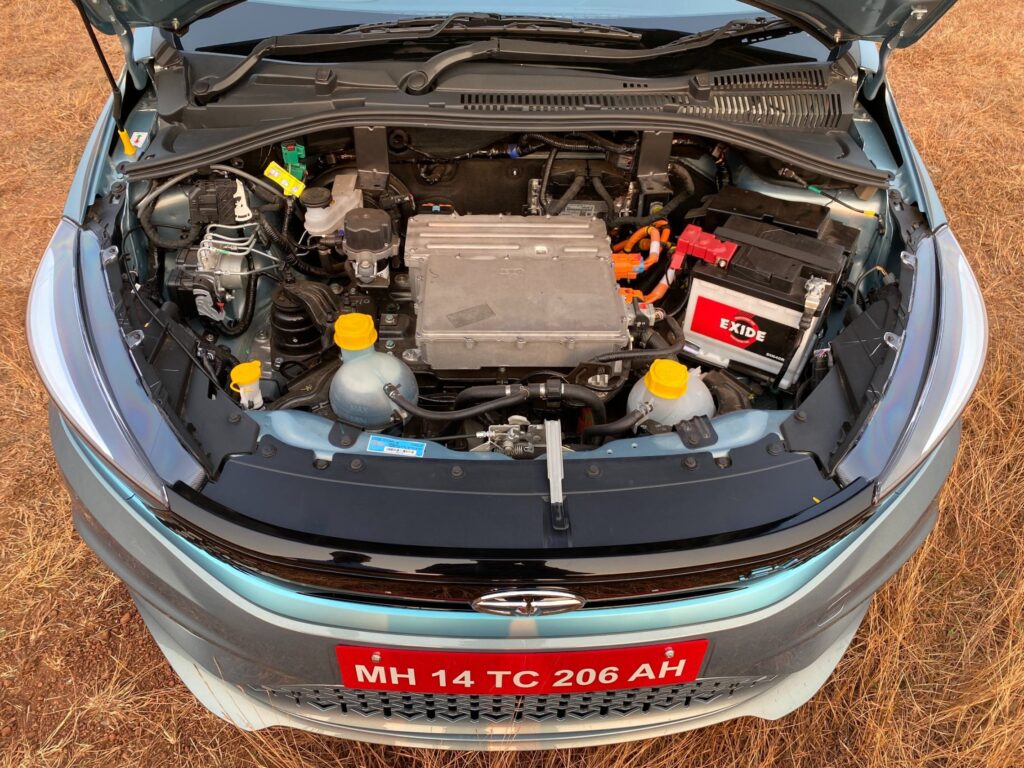
Battery
Tata Motors offer two battery packs with Tiago EV – 19.4 kWh Medium Range and 24 kWh Long Range. The 19.4 kWh with a single electric motor produces 61 hp and 110 Nm while the bigger long-range model comes with 74 hp and 114 Nm. Both these models get single-speed gearbox and the battery pack is IP67 rate. Tata Motors has made some tweaks to the software of the battery pack compared to the Tigor EV.
Drive
During the media drive, we only got to experience the long-range model with a 24 kWh battery pack. When we got the car in the morning with 100 per cent charge, the estimated range shown on the cluster was 265 km but the claimed range is over 300 km, which is achieved only in testing ideal conditions and even before driving our expectations were around a real-world range of 250 km but the range journalists got on the media drive were extremely varying as it depends on how the person before us drove so the journalist who drove our car previous day was not pushing much and was focusing on maximising range. So if you own the Tiago EV, the range will depend upon your driving conditions.
Our drive started from West In Hotel in Anjuna and we were free to explore Goa as there was no dedicated driving location, which is good as we had visited Goa so many times but never got time to explore. But this time we head to Mopa where the new Goa International Airport is located even though it was inaugurated earlier this month the flight operation begins next month only and it is around 25 km from our hotel with google maps showing around 45 minutes. This will be a good test for Tiago EV as the route include city, highway and ghat section with gradient climbs too.

The Tiago EV comes with two driving modes – City and Sport, the default starting option is City. The hatchback gets four stages regenerative braking system but actually only three-step as the least effective is just zero. This time of the year, roads in Goa are pretty bad with lots of potholes. One thing immediately felt about driving is the suspension setup, which is slightly on the stiffer side, but the way it absorbs bumps and potholes is really good. The calibration and tuning are perfect for our roads. When compared to the ICE model weight has gone up and it might have also contributed as the hatchback is very stable even when we attacked around corners.
You don’t need to slow down on potholes or bumps and even on bigger ones, we can feel the thud on the body or in the seats. Tata Motors has done a tremendous job. On our way to the new airport, the City stretch gave us the feel of steering as it is not overly light or hard, it’s a perfect balance of both and obviously, Tata Motors’ steering feel is really good. Like all EVs, the instant acceleration is superb and the power won’t be cut down even if you push a bit hard on the acceleration like the Nexon EV but you will get lots of wheel spin and on loose surfaces, you could easily do drifts but we don’t recommend it.
After the City, we hit the highway and these are concrete roads, so it did make noise levels inside the cabin a little more audible, which is expected. We switched to Sports mode to see the performance as the Tiago EV can cruise comfortably at 80 to 100 kph but over triple-digit speeds, the forward motion is not great. Then we checked on the efficiency and the battery percentage was around 75 per cent. Initially, the charge went down faster but then it got stabilised once the 80 per cent was crossed that’s what we felt.
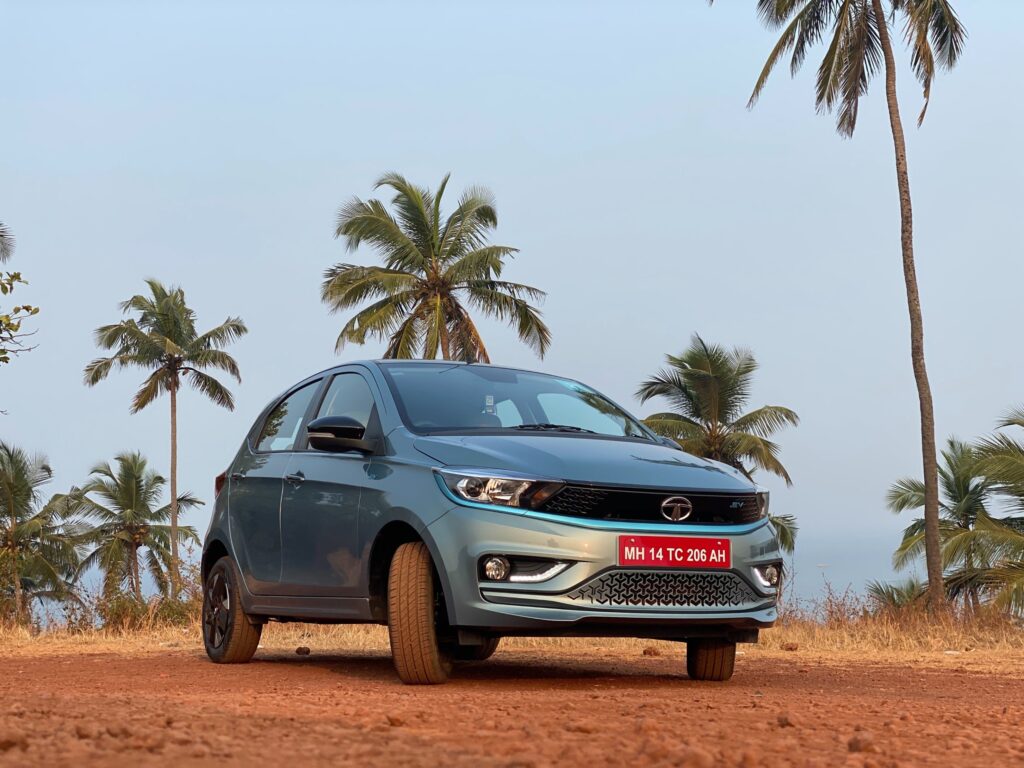
Then we turned away from the highway and hit the twisties or maybe we can call it a small ghat section with lots of inclines. This tested the Tiago EV really well but the hatchback does have any concerns and you could easily go to Munnar or any other hill station with the Tiago EV without any trouble. Eventually, we reached the airport and we couldn’t go inside as it is not yet open to the public. But the percentage of battery remaining is around 65 per cent and it’s really good considering we were not bothering about efficiency and were driving like normal with occasional spirited driving.
When we reached back from the airport to the hotel with around 45 per cent battery remaining, one thing we noticed is that the software system understood our driving and battery consumption was less. So the customers will definitely get a 250 km plus range easily and if you drive it really well then 270 km might be possible. To top up the battery, Tata Motors offer lots of options like a normal slow charger for an emergency while there is an option for either 3.3 KW or 7.2 KW plus DC fast charger in which the Tiago EV battery will reach 100 per cent in just 57 min.
Verdict
The top-end variant with a long-range battery pack, we drove comes at 11.79 lakh (Ex-Showroom) and for that price, there are no other alternative hatchbacks. The estimated real-world range of around 250-270 km is really good for a city hatchback and the suspension is one of the highlights of the package. For tech-savvy people, Tata Motors offer lots of features and connected car tech along with safety as the Tiago is a four-star rated at Global NCAP. So if you are in the market for an affordable EV, then Tiago EV is the current best option. So let’s answer the first question – Can it make EVs more popular among buyers? and the answer is a big yes because it has all the right ingredients for a big seller. Like Indica and Tiago did for our Industry, the EV version can certainly attract more common people to electric generation.


